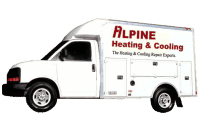
A programmable thermostat is ideal for people who are away from home during set periods throughout the week. Through proper use of pre-programmed settings, a programmable thermostat can save you about $180 every year in energy costs in Skagit Valley.
How Do You Choose the Right Programmable Thermostat or You?
To decide which model is best for you, think about your schedule and how often you are away from home for regular periods—work, school, other
activities—and then decide which of the three different models best fits your schedule:
- 7-day models are best if your daily schedule tends to change; for example, if
children are at home earlier on some days. These models give you the most
flexibility and let you set different programs for different days—usually with four
possible temperature periods per day. - 5+2-day models use the same schedule every weekday, and another
for weekends. - 5-1-1 models are best if you tend to keep one schedule Monday through Friday
and another schedule on Saturdays and Sundays.
Programmable Thermostat Settings
You can use the table below as a starting point for setting energy-saving temperatures and then adjust the settings to fit your family’s schedule and stay comfortable.

Get the Greatest Benefit from Your Programmable Thermostat
- Install your thermostat away from heating or cooling registers, appliances,
lighting, doorways, fireplaces, skylights and windows, and areas that receive
direct sunlight or drafts. Interior walls are best. - Keep the thermostat set at energy-saving temperatures for long periods of time,
such as during the day when no one is home and at bedtime. - Set the “hold” button at a constant energy-saving temperature when going
away for the weekend or on vacation. - Resist the urge to override the pre-programmed settings. Every time you do, you
use more energy and may end up paying more on your energy bill. - Use a programmable thermostat for each zone of your house if you have
multiple heating and cooling zones. This will help you maximize comfort,
convenience, and energy savings throughout the house. - Change your batteries each year if your programmable thermostat runs on
batteries. Some units will indicate when batteries must be changed.
If you have a heat pump, you may require a special programmable thermostat to maximize your energy savings year-round. Talk to your retailer or contractor for details before selecting your thermostat.
If you have a manual thermostat, you can adjust the temperatures daily before you leave the house and when you go to sleep at night. Typically, adjusting temperatures 5 – 8 degrees (down in winter, up in summer) can help save energy if you are going to be away from home for several hours.

 As much as half of the energy used in your home goes to heating and cooling. So making smart decisions about your home’s heating, ventilating, and air conditioning (HVAC) system can have a big effect on your utility bills — and your comfort. Take these steps to increase the efficiency of your heating and cooling system.
As much as half of the energy used in your home goes to heating and cooling. So making smart decisions about your home’s heating, ventilating, and air conditioning (HVAC) system can have a big effect on your utility bills — and your comfort. Take these steps to increase the efficiency of your heating and cooling system.
Change your air filter regularly
Check your filter every month, especially during heavy use months (winter and summer). If the filter looks dirty after a month, change it. At a minimum, change the filter every 3 months. A dirty filter will slow down air flow and make the system work harder to keep you warm or cool — wasting energy. A clean filter will also prevent dust and dirt from building up in the system — leading to expensive maintenance and/or early system failure.
Tune up your HVAC equipment yearly
Just as a tune-up for your car can improve your gas mileage, a yearly tune-up of your heating and cooling system can improve efficiency and comfort.
Install a programmable thermostat
A programmable thermostat is ideal for people who are away from home during set periods of time throughout the week. Through proper use of pre-programmed settings, a programmable thermostat can save you about $180 every year in energy costs.
Seal your heating and cooling ducts
Ducts that move air to-and-from a forced air furnace, central air conditioner, or heat pump are often big energy wasters. Sealing and insulating ducts can improve the efficiency of your heating and cooling system by as much as 20 percent — and sometimes much more.
Focus first on sealing ducts that run through the attic, crawlspace, unheated basement, or garage. Use duct sealant (mastic) or metal-backed (foil) tape to seal the seams and connections of ducts. After sealing the ducts in those spaces, wrap them in insulation to keep them from getting hot in the summer or cold in the winter. Next, look to seal any other ducts that you can access in the heated or cooled part of the house.
Consider installing ENERGY STAR qualified heating and cooling equipment
If your HVAC equipment is more than 10 years old or not keeping your house comfortable, have it evaluated by a professional HVAC contractor. If it is not performing efficiently or needs upgrading, consider replacing it with a unit that has earned the ENERGY STAR. Depending on where you live, replacing your old heating and cooling equipment with ENERGY STAR qualified equipment can cut your annual energy bill by more than $115. But before you invest in a new HVAC system, make sure that you have addressed the big air leaks in your house and the duct system. Sometimes, these are the real sources of problems rather than your HVAC equipment.
Contact Alpine Heat to ask about Proper Installation of your new equipment
Replacing your old heating and cooling equipment with new, energy-efficient models is a great start. But to make sure that you get the best performance, the new equipment must be properly installed. In fact, improper installation can reduce system efficiency by up to 30 percent – costing you more on your utility bills and possibly shortening the equipment’s life.


